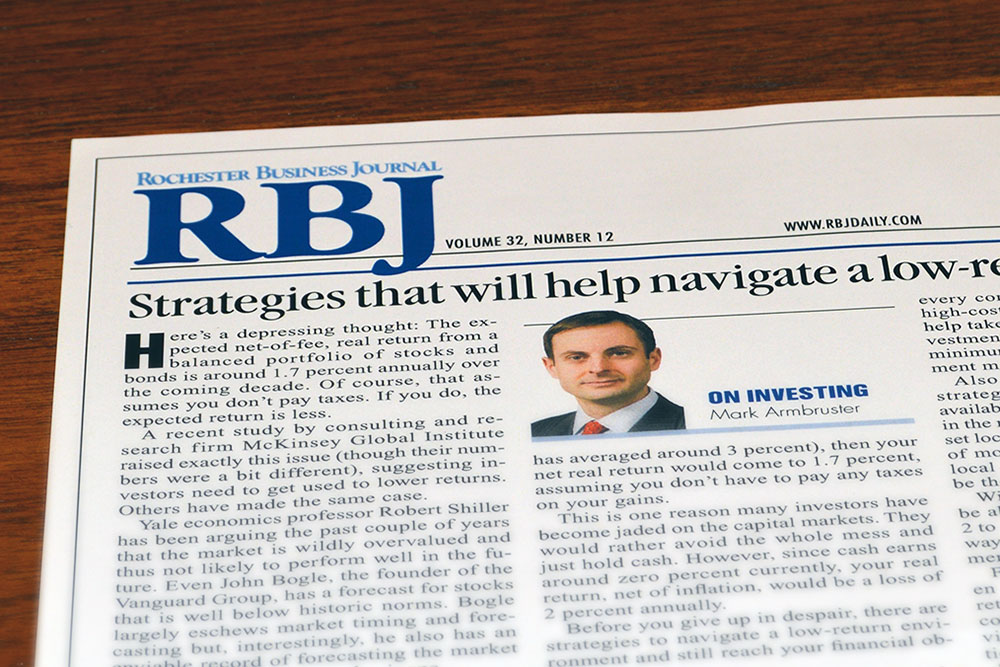Rochester Business Journal
JUNE 24, 2016
Mark Armbruster
On Investing
Here’s a depressing thought: The expected net-of-fee, real return from a balanced portfolio of stocks and bonds is around 1.7 percent annually over the coming decade. Of course, that assumes you don’t pay taxes. If you do, the expected return is less. A recent study by consulting and research firm McKinsey Global Institute raised exactly this issue (though their numbers were a bit different), suggesting investors need to get used to lower returns. Others have made the same case.
Yale economics professor Robert Shiller has been arguing the past couple of years that the market is wildly overvalued and thus not likely to perform well in the future. Even John Bogle, the founder of the Vanguard Group, has a forecast for stocks that is well below historic norms. Bogle largely eschews market timing and forecasting but, interestingly, he also has an enviable record of forecasting the market correctly over long time horizons.

Most of these long-range forecasts expect stocks to earn somewhere around 6 percent to 7 percent annually for the coming decade. This is significantly below stocks’ long-run return of over 10 percent annually since 1871. Relatively high stock market valuations, anemic economic growth, low labor force participation, and shifting demographic trends are all causing market pundits to sound the alarm on future stock market growth.
For bonds, the long-range forecasts predict returns of around 2 percent annually, which likely won’t even keep pace with long-run inflation. This is because of the very low yield offered currently, as well as the likelihood that the Federal Reserve will raise interest rates over time.
If you combine expected returns for stocks and bonds in a typical, balanced portfolio with 60 percent in stocks and 40 percent in bonds, and assuming no investment management, mutual fund or trading expenses, you would earn approximately 4.7 percent per year. If you figure in 1 percent for costs (most studies estimate total investment costs are closer to 2 percent) and inflation of 2 percent (historically it has averaged around 3 percent), then your net real return would come to 1.7 percent, assuming you don’t have to pay any taxes on your gains.

